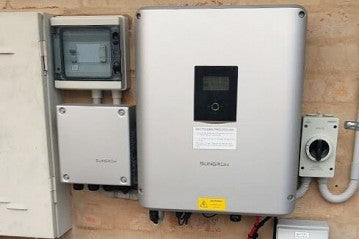
As the demand for renewable energy sources continues to rise, solar power systems have become increasingly popular. One of the key components of a solar power system is the solar controller, which regulates the flow of electricity from the solar panels to the batteries. If you're considering investing in a solar power system, you may also be wondering about the benefits of a hybrid inverter. In this blog post, we'll explore the pros and cons of a hybrid inverter, and help you decide whether it's the right choice for your solar power system.
1. Pros of a Hybrid Inverter
(1) Power Resiliency
One of the primary benefits of a hybrid inverter is its ability to provide power resiliency. With a hybrid inverter, you can store energy in batteries and use it when there is a power outage or during peak hours when electricity prices are high. This means you'll have access to reliable power even when the grid goes down.
(2) Easily Retrofit Battery Storage
Another advantage of a hybrid inverter is that it can easily be retrofitted with battery storage. This means you can add batteries to your system at a later date, without having to replace your existing inverter. This makes it easy to scale your solar power system as your energy needs change over time.
(3) Simplified Energy Monitoring
A hybrid inverter simplifies energy monitoring by allowing you to monitor your solar power system and battery storage from a single interface. This makes it easy to keep track of how much energy you're generating and using, and helps you optimize your energy usage for maximum efficiency.
2. Cons of a Hybrid Inverter
(1) Not Ideal For Upgrading An Existing System
If you already have a solar power system with a standard inverter, it may not be cost-effective to upgrade to a hybrid inverter. This is because a hybrid inverter is designed to work with battery storage, which means you'll need to add batteries to your system as well. This can be a significant expense, and may not be worth it if your existing system is working well.
(2) Increased Equipment Expenses
Another disadvantage of a hybrid inverter is that it can be more expensive than a standard inverter. This is because it requires additional equipment, such as batteries, to work effectively. You'll need to factor in the cost of these additional components when deciding whether a hybrid inverter is right for you.
(3) Less Future Design Flexibility
A hybrid inverter may also limit your future design flexibility. If you want to add more solar panels to your system in the future, you may need to upgrade your inverter to a larger one. This can be more difficult with a hybrid inverter, as it is designed to work with a specific number of panels and batteries.
3. Should You Invest In A Hybrid Solar Inverter?

So, should you invest in a hybrid solar inverter? The answer depends on your individual energy needs and budget. If you live in an area with frequent power outages, a hybrid inverter may be a good investment to ensure that you have access to reliable power.
If you're planning to install a new solar power system, a hybrid inverter may be a good choice if you're interested in adding battery storage in the future. However, if you already have a solar power system with a standard inverter that is working well, it may not be cost-effective to upgrade to a hybrid inverter.
4. Conclusion
In conclusion, a hybrid inverter can provide many benefits for your solar power system, including power resiliency, easy retrofitting of battery storage, and simplified energy monitoring. However, there are also some disadvantages to consider, including increased equipment expenses and less future design flexibility. Ultimately, the decision to invest in a hybrid inverter depends on your individual energy needs and budget. Be sure to weigh the pros and cons carefully before making a decision.

0 Kommentare